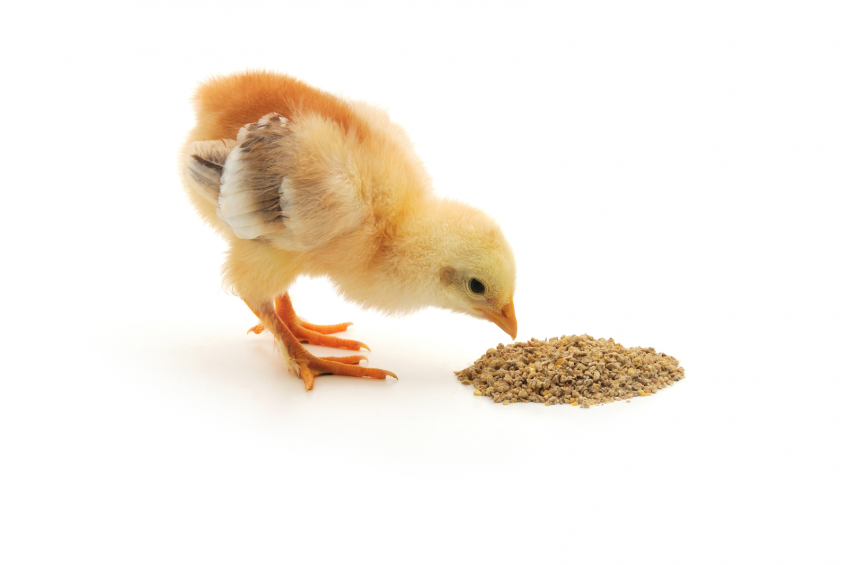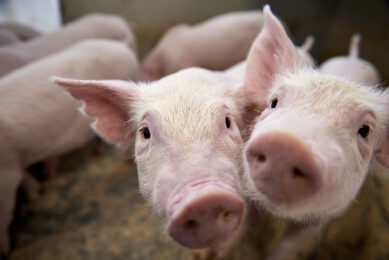Enhance intestinal health and improve performance

Intestinal health is a concern for everybody active in animal production. A well-developed, well-balanced and diverse microbiome is the best protection against occasional enteritis and is the best insurance for a good performance.
Too often intestinal health issues are regarded as a disease. Of course, infections with pathogenic viruses and bacteria can cause severe enteritis, generalised diseases and mortality. In today’s animal production, infection with those pathogens are mostly managed by vaccination and biosecurity. But even the best biosecurity cannot avoid common intestinal health issues. This is because most of these issues are not caused by pathogens, but by ‘potential’ pathogens or ‘pathobionts’. A pathobiont is a potentially pathogenic bacterium which, under normal circumstances, lives as a symbiont in the intestine but in case of dysbiosis, translocation in the intestine or passage through the intestinal barrier (impaired intestinal integrity) can cause bacterial enteritis and generalised diseases. Some examples of those pathobionts are Clostridium perfringens, Escherichia coli, some Enterococcus spp. and others. Some strains of bacteria have more pathogenic potential than others but don’t automatically cause enteritis issues.
The importance of the intestinal microbiome
In different animal species (including humans), the intestinal microbiome is undergoing continuous, scrutinised evaluations. Some scientific groups have even referred to it as the hidden metabolic organ. This statement may not be too far-fetched, as we know that the microbiome, which contains over 4 X 1013 cells (with ca. 1000 different bacterial species), can have a physiology and pathology of its own, where the individual health can be damaged when its combined population organisation is affected. Additionally, the intestinal microbiome is known to have a strong influence in the physiology, metabolism, nutrition and immune function of the animals, where any changes (to this bacterial population) can have major consequences, both beneficial and detrimental, for their health.
Undoubtedly, the majority of microbes living within the animals are not pathogenic; it is the negative alteration of this balanced intestinal microbial ecosystem, known as ‘dysbiosis’ or ‘dysbacteriosis’ that can result in different disease conditions. Animals with a more diverse microbiota therefore have a better chance of a healthier life and of growing to their full potential being more resistant to diseases. Thus, it is proposed that the healthy bacteria that inhabit the gastrointestinal tract promote good health by neutralising the adverse activities of harmful commensals and invading microbes. However, there are many factors that can disturb the intestinal bacterial balance (see Figure 1).
Figure 1 – Influences on the intestinal microbiome.

Feed composition and management are the most important factors that influence the composition of the intestinal microbiome, positively or negatively. Pathogenic infections and parasitic infestations influence the microbiome negatively. Antibiotics are used very frequently to manage the bacterial infections or the dysbiosis, but always have a negative effect on the microbiome.
Managing the intestinal microbiome
Beside feed composition and management, several feed additives can be efficient tools to manage the intestinal microbiome, and by consequence prevent enteric disorders and diseases caused by enteric pathobionts.
Prebiotics – These are dietary components that are not digested by the host but they benefit the host by selectively stimulating the growth and/or activity of one or a limited number of bacteria in the gut, predominantly those that produce SCFA. Dietary supplementation of prebiotics has been shown to stimulate these bacteria in pigs. Prebiotics have great potential to modulate enteric microflora and discourage the colonisation of enteric pathogens. Successes have been derived using non-digestible oligosaccharides, especially those that contain fructose, xylose, galactose, glucose and mannose.
Probiotics (Active microbials) – Research at Kemin has concluded that intestinal health management for optimal performance can be accomplished with the use of active microbials. Not all active microbial strains are equally efficient due to the differences in survival and persistence in the harsh conditions of the gastrointestinal tract, mechanism of action, and the differences in immunomodulatory performance. Some active microbial strains are able to inhibit Clostridium spp., but the mechanism of action by which this objective is accomplished varies. Some can secrete specific molecules, which stimulate the growth of beneficial bacteria in the micro flora, such as Lactobacillus spp. and Bifidobacterium spp. This gives a balanced ratio between these and Clostridium spp.
Bacillus subtilis strain PB6, is an active microbial that has proven, in in vivo and in vitro assays, to be highly effective in its capacity to inhibit growth of different pathogenic strains of Clostridium spp. and to have anti-inflammatory effects. PB6 in vivo has also been able to show that it can help balance the first-line mediators of inflammation. By maintaining a state of balance in the gastrointestinal tract, Bacillus subtilis PB6 improves the growth rate and feed utilisation of poultry and other livestock. Bacillus subtilis PB6 is unique in that it has the ability to inhibit different strains of Clostridium, while the populations of beneficial bacteria such as Lactobacillus spp. and Bifidobacterium spp. are stimulated. As a consequence, the level of potentially pathogenic gram negative bacteria is reduced in the intestinal content and in the caeca.
Organic acids – The mode of action of the antimicrobial activity of organic acids (mainly against gram negative bacteria) is generally known. Organic acids have already been used for decennia to control pathogens. However, to be able to exercise this activity in the intestine, it’s advised to choose encapsulated acids that will be released lower in the intestinal tract.
Essential oils (and medium chain fatty acids) – Many products from plant origin are on the market. Specific essential oils with several active molecules have shown to be able to modulate the intestinal microbiome and to have antimicrobial capacities. Therefore, they are an important tool in intestinal pathogen control programmes.
Butyric acid – Here, the antimicrobial effect is the same as from other organic acids. However, butyric acid also stimulates and feeds the proliferation of the enterocytes and enhances the development of the villi. Butyric acid is a rapidly absorbed nutrient and energy source. This makes it effective in the whole intestine, but the sustained release of butyric acid must be guaranteed and proven. This sustained release can be obtained by some encapsulation technologies.
Avoiding economic impacts
It is important to avoid mortality but mainly the economic impact of impaired intestinal health is of major concern. A well-developed, well-balanced and diverse microbiome is the best protection against intestinal disorders or generalised infections from intestinal origin. As these disorders are economically of most importance, managing the intestinal microbiome is the best way to insure the performance in animal production. Beside feed composition and management, several feed additives are efficient tools to manage the intestinal microbiome and intestinal health. Seeing the complexity of the microbiome and of its interactions with the intestinal and general physiology, the choice of the feed additive(s) will depend on the needs of the individual animal.
References available on request
 Beheer
Beheer











 WP Admin
WP Admin  Bewerk bericht
Bewerk bericht